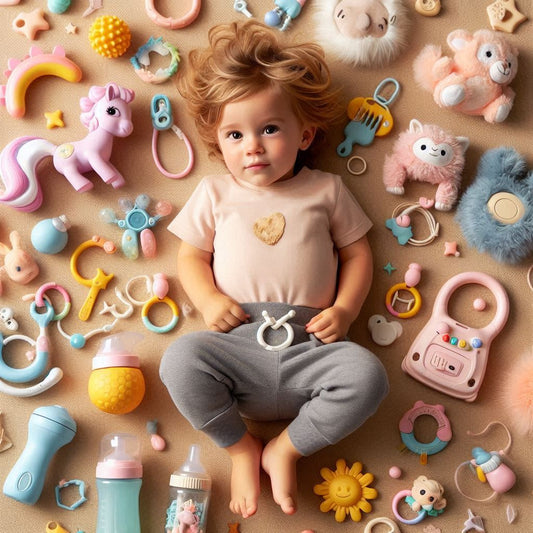Essential Bottle Feeding Tips for New Moms in 2025 – How to Choose Bottles, Create a Routine, and Feed Safely with Confidence
Kin BuBShare
🍼 A 2025 Guide to Confident, Comfortable, and Bonding-Focused Feeding
Whether you’re a first-time parent or transitioning from breastfeeding, bottle-feeding can feel overwhelming at first. But with the right knowledge, tools, and mindset, it can become a calm, nurturing, and empowering part of your daily routine.
In 2025, bottle-feeding isn’t just about convenience—it’s about connection, comfort, and confidence. This guide provides essential bottle feeding tips every new mom needs to know, from choosing the right bottles to mastering feeding positions and preventing colic.
Table of content
🌟 Why Bottle-Feeding Confidence Matters
Bottle-feeding allows moms, dads, and caregivers to share in the feeding journey. Done correctly, it can:
- Promote strong parent-baby bonding
- Support consistent weight gain and nutrition
- Reduce feeding stress and nighttime struggles
- Allow others to help with feedings, supporting mom’s rest and recovery
With more feeding tools, bottle types, and baby care research available than ever before, 2025 is a great time to embrace bottle-feeding with ease.
✅ 10 Must-Know Bottle Feeding Tips for New Moms
1. Choose the Right Bottle for Your Baby
Every baby is different. In 2025, top bottle designs include:
- Anti-colic bottles with vent systems
- Wide-neck bottles for breastfeeding transitions
-
Glass or BPA-free plastic bottles for health and sustainability
Test a few styles and observe how your baby responds.
2. Select the Correct Nipple Flow
Newborns usually need slow-flow nipples, while older babies may transition to medium or fast flow. Signs your baby needs a change:
- Frustration or fatigue while feeding = too slow
- Coughing or leaking milk = too fast
3. Hold Baby Upright to Prevent Gas
Position your baby at a 30–45 degree angle during feeding. This supports digestion and reduces the risk of:
- Spit-up
- Gas buildup
- Ear infections
4. Always Tilt the Bottle Correctly
Keep the bottle full of milk at the nipple tip to avoid air intake. This prevents baby from swallowing air, which can lead to bloating or colic.
5. Practice Responsive Feeding
Watch for early hunger cues (rooting, hand sucking) and feed on demand, not just on a strict schedule. This builds trust and promotes a healthy feeding relationship.
6. Burp Your Baby Frequently
Stop every 2–3 ounces (or midway through feeding) to burp baby. Common techniques include:
- Over-the-shoulder burping
- Sitting baby upright and gently patting the back
7. Sterilize and Sanitize Bottles Properly
In 2025, many parents use:
- Electric steam sterilizers
- UV light sanitizing boxes
- Boiling water or dishwasher-safe options Always clean nipples and parts with a bottle brush and mild baby-safe soap.
8. Maintain Eye Contact While Feeding
Cradle baby close and make gentle eye contact. It boosts bonding and emotional security—even if bottle-feeding, it mirrors the connection of breastfeeding.
9. Create a Feeding Routine
Predictable routines help regulate your baby’s sleep and digestion. While feeding on demand is key, try to:
- Feed in a calm, quiet setting
- Dim the lights before bedtime feeds
- Use consistent cues like gentle rocking or a feeding song
10. Involve Other Caregivers
Let your partner, grandparent, or trusted sitter bottle-feed. This gives you a break and strengthens the baby’s relationship with others—while also helping you catch up on sleep!
🧠 Bonus Tips for Common Challenges
| Challenge | Solution |
| Gas or colic | Use anti-colic bottles; burp more often |
| Leaking bottles | Check nipple flow or if the ring is too loose |
| Refusing the bottle | Try a different nipple shape, temperature, or have someone else feed |
| Feeding too quickly | Switch to a slower nipple and upright posture |
🙋 Frequently Asked Questions
1. Can I mix breastmilk and formula in the same bottle?
Yes—but always follow safety guidelines. Mix formula properly first, then add breastmilk if needed.
2. How often should I feed a newborn by bottle?
Every 2–3 hours, or 8–12 times per day. Look for signs of hunger rather than waiting for crying.
3. What’s the best bottle material?
Glass and BPA-free plastic are both popular. Silicone bottles are gaining traction for softness and eco-safety.
4. Can I pre-make bottles for night feedings?
Yes—store prepared formula or expressed milk in the fridge for up to 24 hours. Use a bottle warmer or warm water bowl to heat safely.
5. When should I replace bottle nipples?
Every 4–6 weeks or at the first sign of cracking, stickiness, or thinning.
6. Can I bottle-feed and breastfeed at the same time?
Yes! This is called combo feeding. Use slow-flow nipples to mimic breast milk flow and reduce nipple confusion.
📌 Conclusion: Bottle-Feeding with Confidence in 2025
Bottle-feeding is a personal and powerful part of motherhood. With the right tools, a little practice, and plenty of patience, it becomes a beautiful time of bonding, growth, and calm.
Whether you're supplementing, exclusively bottle-feeding, or transitioning between stages, these tips are designed to support both you and your baby—every step of the way.
📝 Reference Links:
🌟 "Loved What You Read? Grab Yours Now!"







